One marketing blunder can make or break any brand these days. Competition is fierce and if a brand doesn’t (or accidentally doesn’t appear to) align with a customers’ values, there could be major consequences. In this post, we’re going to walk you through eight of the worst marketing fails in history by brands we’re familiar with. For each one, we’re going to cover:
- What the brand was trying to do
- Why it failed
- The key takeaway
- How to do it right
This way, you can walk away with practical ways to apply this to your small business or agency. Let’s dive in.
8 major marketing fails and what they teach us
Something to keep in mind is that these marketing fails do not necessitate failure for any of these brands as a whole. None of them would be so famous if they didn’t have great marketing strategies. But the bigger you go, the bigger the results—good or bad.
1. Kendall Jenner Pepsi ad
This long commercial from 2017 follows along with a marching protest and features popular model Kendall Jenner watching and then joining it. In the end, she walks to the front of the protest line and hands a can of Pepsi to a police officer as a peace offering. He takes the Pepsi and everyone cheers.
According to Pepsi, the ad was a move to promote global unity, peace, and understanding, but it achieved exactly the opposite. As soon as the ad came out, it received a storm of backlash and criticism. People found the ad insensitive and tone-deaf. Further, the ad supposedly trivialized the Black Lives Matter movement and made the protest seem like a fun party.
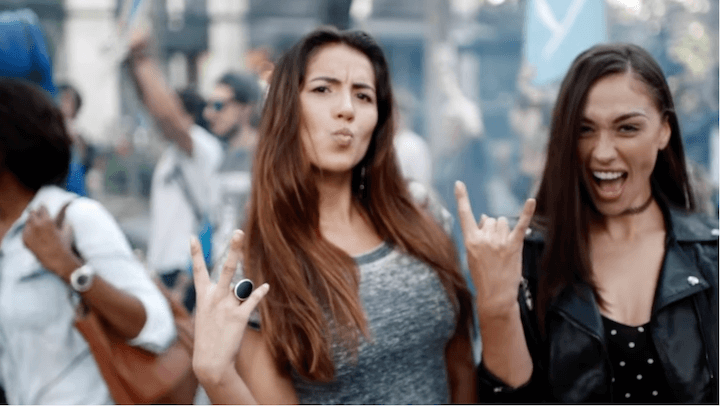
The New York Times coverage on the matter says it best:
“Elle Hearns, the executive director of the Marsha P. Johnson Institute and formerly an organizer for Black Lives Matter, said the ad ‘plays down the sacrifices people have historically taken in utilizing protests. ‘No one is finding joy from Pepsi at a protest,” she said. “That’s just not the reality of our lives. That’s not what it looks like to take bold action.”
Bernice King, the daughter of Martin Luther King Jr., was another of the activists who criticized the ad, tweeting “If only Daddy would have known about the power of #Pepsi.”

Pepsi pulled the ad from the air and YouTube within 24 hours and apologized saying the company “missed the mark.”
The takeaway
Never use controversial topics or social issues to promote your products or services. If you want to capitalize on a trending topic, do your research to make sure there is no risk for polarizing your audience and losing customers.
How to do it right
If you want to leverage popular topics for marketing success,
- Learn how to identify hot topics with search trend data.
- Try out social listening with boolean search.
- Know how to avoid tone-deaf marketing.
2. Gap’s logo redesign
In 2010, iconic brand Gap replaced its 20-year-old logo with a new one: black, bold font with a blue square in the upper right.
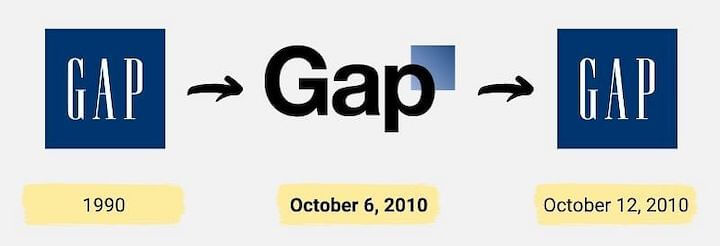
According to this Vanity Fair article, it was Gap’s attempt to transition from “classic, American design to modern, sexy, cool,” but it was immediately rejected by consumers, to the point of someone creating a satirical Gap logo Twitter feed…
and yet another creating a site called “Crap Logo Yourself.” Gap tried to turn this into a “crowd sourcing project” with the below Facebook post, saying it is “thrilled to see passionate debates unfolding!” and asking followers to share their logo design ideas.
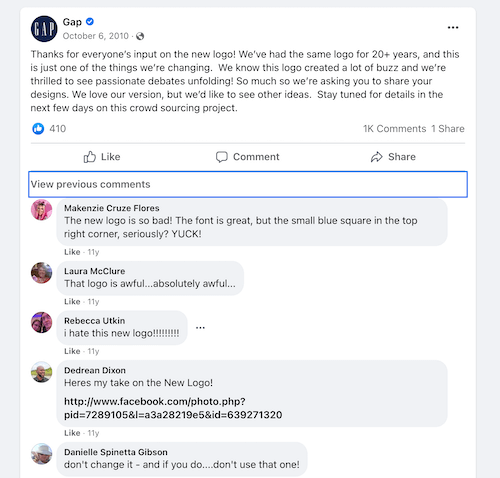
But this didn’t go over well, either. The backlash was so severe that the company switched back to its old logo within six days.
The takeaway
People like new things, but they also like tradition, so you have to strike a balance. If you’re going to make a major change in your branding, lower the risk of a negative response by getting outside input, interviewing or polling customers, testing it out on a small segment of your audience, or making a formal introduction addressing the change. And always keep your most loyal customers at the forefront while making decisions. It is still possible to reach out to the new audience without losing the hearts of the old ones.
How to do it right
To keep your audience happy,
- Try any of these free survey tools.
- Learn how to create crazy-accurate buyer personas.
- Follow these loyalty marketing strategie.
3. Burger King’s Women’s Day tweet
On International Womens Day in 2021, Burger King’s UK division published a Twitter thread where the first tweet said: “Women belong in the kitchen” and was followed by two more tweets, one that said “If they want to, of course” and another that announced their new scholarship program to help women get a degree in culinary arts and reduce the gender gap in the restaurant sector.
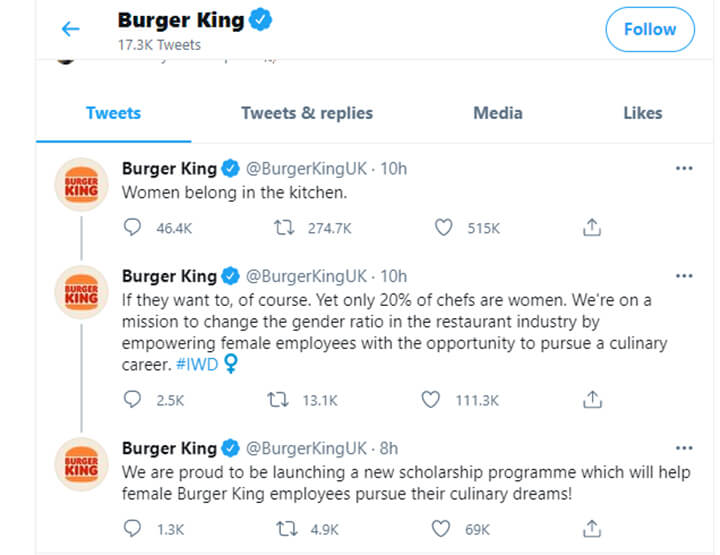
Though the first tweet was intended to capture attention and the following two tweets were progressive, many Twitter users never got past the first tweet, resulting in a wave of backlash for the seemingly sexist statement. And those who saw all three tweets still saw it as a tone-deaf attempt to honor Women’s Day.
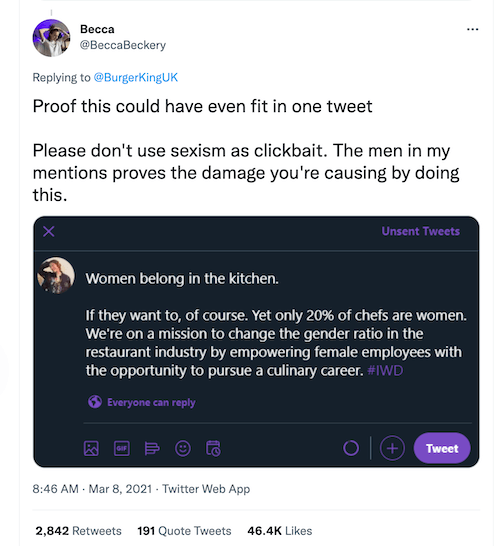
The chain deleted the thread and published a tweet apologizing for the mistake and explaining the intention.
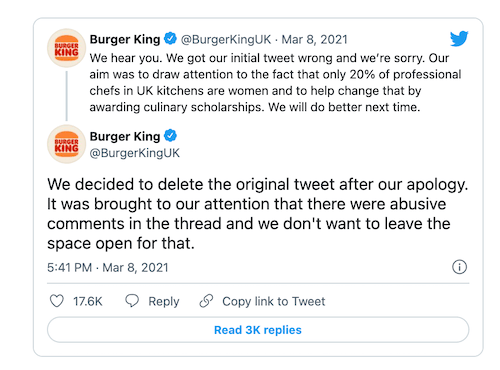
The takeaway
Every social media platform works differently. What works on Instagram, where the user can see the big picture straight away, may not work over Twitter via single tweet. And what looks right on desktop could look entirely different on mobile. So test everything out before you hit publish, and as mentioned in the first example, don’t use something controversial to grab attention. Customers might misinterpret your words. So, choose and present them wisely.
How to do it right
If you want to grab attention with your copywriting,
- Try out these power words and phrases
- Use emotional trigger words
- Check these tips for writing irresistible headlines.
4. Audi’s wedding commercial
In July of 2017, Audi aired a commercial where a bride and groom are about to take their vows, but the mother of the groom marches up to the alter and inspects the bride. She pinches her nose, pulls back her ear, and checks the inside of her mouth.
The couple sighs in relief when she gives a nod of approval, but the mother gives one last look at the bride’s chest, which she covers anxiously with her hands. The scene then changes to a red Audi sedan driving through the city streets as a man’s voice says “an important decision must be made carefully.”
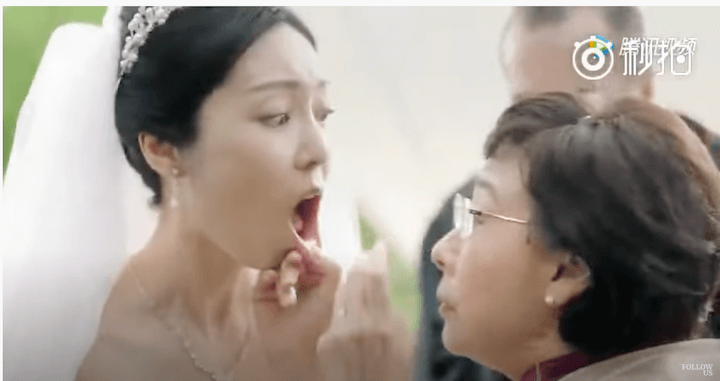
The idea of Audi’s campaign was to promote its properly-inspected secondhand cars, but that is not how it was perceived. People all over the world said that not only did it objectify women, but it also reduced their value to that of a vehicle. Twitter users shared the commercial with comments like “how to make an ad that will turn off consumers,” Weibo users criticized the ad as “disgusting,” and many people urged a boycott of the brand.
Audi stated it “deeply regrets” the commercial’s airing and that the ad “does not correspond to the values of our company in any way.” The ad, which was made exclusively for the Chinese audience, was withdrawn.
The takeaway
Just because you know the message behind your ad, this doesn’t mean everyone else will. Always run your content by a diverse group of people to make sure it’s 100% appropriate. And it goes without saying at this point, but do not use controversial or potentially sensitive topics in your marketing campaigns. If you have even a shadow of a doubt, don’t risk it.
How to do it right
If you want to create a bold and (positively) memorable marketing campaign,
- Get inspiration from the five best marketing campaigns we’ve ever seen.
- Establish your core values and filter all of your content through them.
- Try these guerrilla marketing ideas instead.
5. AAirpass by American Airlines
In the early 1980s, American Airlines was going through a rough patch and looking for quick ways to raise capital. Instead of securing bank loans, the company introduced an “AAirpass” that offered unlimited first-class air travel for a flat rate of $250,000.
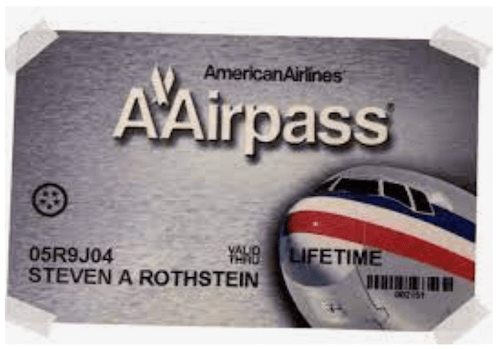
Unlike today when companies place restrictions on these kinds of offers to protect themselves from financial losses, the AAirpass was truly limitless and membership was life-long. The result? American Airlines started losing millions of dollars every year due to the high volume of flights taken by AAirpass holders. It started an investigation to see whether there was any way they could revoke the membership of the frequent flyers, resulting in outrage and lawsuits.
In a nutshell, American Airlines’ strategy to make quick money backfired, resulting in financial losses and angry customers.
Takeaway
If you’re offering a high-value incentive to your customers, include terms and conditions to protect your business from exploitation and make sure the cost of the incentive does not (or will not eventually) outweigh the benefits to your business. And remember, there is no such thing as fast money in business! It takes careful planning and a holistic strategy.
How to do it right
If you want to stay financially sound,
- Find out what growth marketing really means and 22 strategies to get it right.
- Use these simpler ways to promote your business—with or without money.
- Focus on maximizing ROI and plugging leaks in your spend.
Are you wasting any money in Google Ads? Find out with the FREE Google Ads Performance Grader!
6. Bloomingdales’ spiked eggnog ad
In their 2015 Christmas catalog, Bloomingdale’s published an ad showing a sharply dressed man staring at a laughing woman who has her head turned, and a caption that read, “Spike your best friend’s eggnog when they’re not looking.”
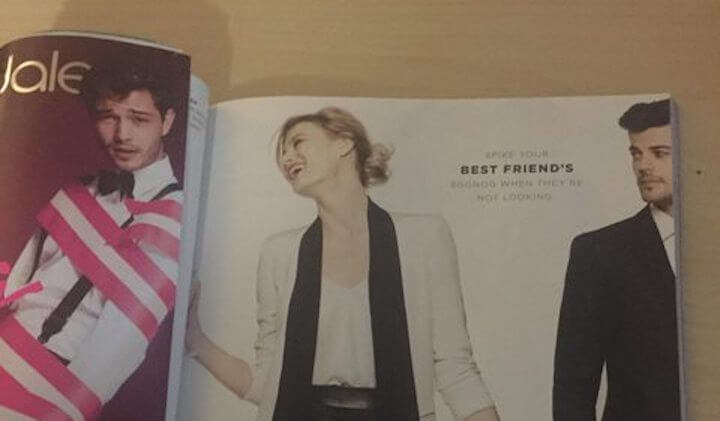
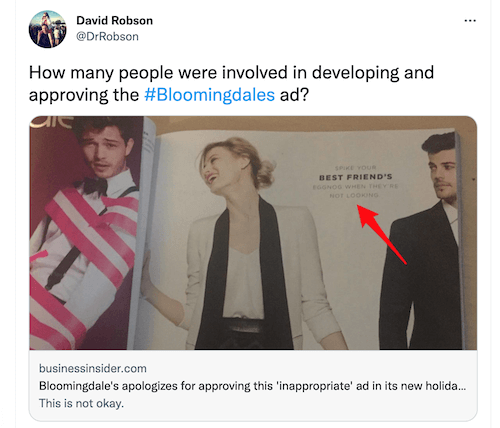
In response to the uproar, Bloomingdale’s tweeted an apology, calling the ad “inappropriate and in poor taste.”
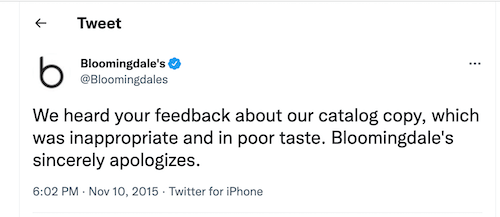
However, this was a print ad, so there was no way to pull it from already distributed catalogs.
Takeaway
Playful humor is a good way to engage your audience, but never take this chance with controversial and sensitive topics. Furthermore, be extra cautious with printed material. You can delete a social media post or stop running a digital ad (although yes, there will be screenshots), but it’s much harder to take back printed material, or detect the negative reactions quickly.
Tools
If you want to have fun with your holiday content,
- Learn how to use humor in marketing the right way.
- Get inspired by these funny ads that work.
- Take a look at these genius tips and examples for fun and cliche-free holiday copywriting.
7. Dove’s ‘racist’ campaign
In 2017, Dove posted a three-second video on Facebook of three women of different ethnicities, each removing a t-shirt to reveal the next woman. The intention was to celebrate diversity and convey that its body wash is for every woman.

However, it was perceived as a black woman transforming into a white woman after using the body wash, implying that the black woman was less clean than the white woman. The ad was called inappropriate and racist, and many consumers responded by boycotting Dove products altogether.
Dove quickly removed the post and tweeted an immediate apology, saying it “missed the mark in representing women of color thoughtfully.”
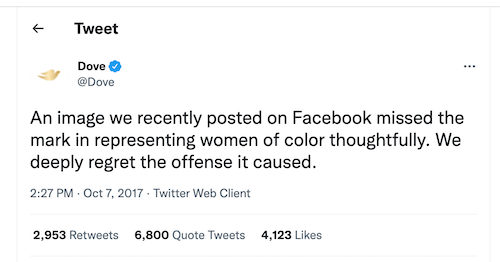
It later published a more thorough statement that explained the intent of the ad, reaffirmed Dove’s core beliefs, and ensured it would be re-evaluating its internal processes to prevent this mistake in the future.
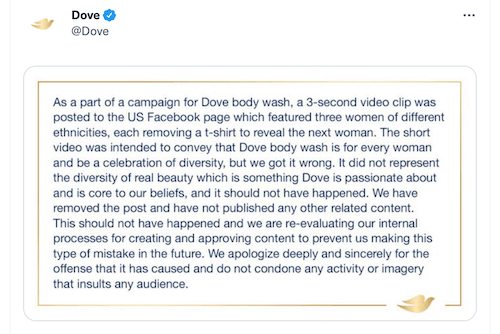
Takeaway
While diversity is sensitive topic, it is one we are held responsible to demonstrate and celebrate through our marketing. This should just be a standard for all of our content, but if you are going to make an extra push, make sure to run it by as many people as possible before you go live. Better yet, make sure to hire people of diverse background so you can have a built-in, multi-perspective review team.
How to do it right
If you want to succeed with a cause-related marketing campaign,
- Learn how to cultivate a diverse workforce.
- Make sure you know how to demonstrate true diversity in marketing.
- Check out our tips on cause-based marketing.
8. Coca-Cola’s ‘New Coke’ Flavor
In the 1980s, the war between Pepsi and Coca-Cola was at its peak. Though Coca-Cola was number one, Pepsi had been closing the gap with brilliant ad campaigns like the Pepsi Challenge in 1975.
To get back in the game, Coca-Cola introduced “New Coke,” on April 23, 1985—which had the smooth and sweeter taste of Diet Coke, but sweetened with corn syrup. Coca-Cola had tested it on 200,000 subjects and 53% preferred the New Coke recipe over the original. However, when it finally went to market, customers hated it.
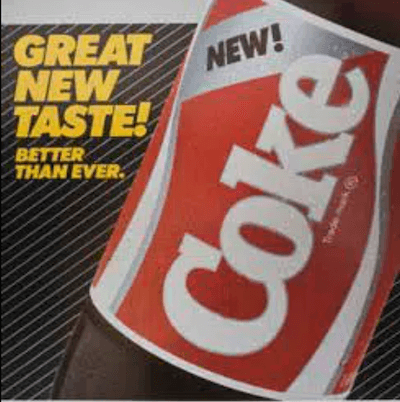
Coca-Cola received 400,000 phone calls and letters from angry consumers professing their dissatisfaction with the new flavor. Coke returned its original formula “Coca-Cola Classic” to the shelves in the wake of the backlash.
Takeaway
Coca-Cola clearly did more market research than Gap, but the takeaway here is that taste alone is not the only factor in your customers’ satisfaction. Coca-Cola’s brand identity has been closely tied to friendship and nostalgia, and this new recipe did not align with that. Always consider what your products mean to your customers on an emotional level. Also, when you have a successful product, be cautious about upgrades and improvements. If it ain’t broke, don’t fix it!
How to do it right
If you want to launch a new product or gain an edge over your competitors,
- Learn from the best competitive ads we’ve ever seen.
- Follow these steps to build a solid go-to-market strategy
- Make sure you have a solid brand strategy in place.
Marketing fails are in the details
Every business wants to stand out, but unless you take your time and fully think through your ideas and plans, you run the risk of going viral for the wrong reasons. Whether you’re a massive brand or a local shop, the biggest takeaway here is the same: Pay attention to the details—in how you present your message, represent your values, plan your campaigns, and if (hopefully not) applicable, how you apologize.
About the author
Dhruv Maheshwari is the founder of Outsourc. He helps brands grow organically through winning content, and in his free time, he is chiseling his fitness goals and traveling around the world.
The post The 8 Biggest Marketing Fails of All Time (With Practical Takeaways) appeared first on WordStream.




Recent Comments